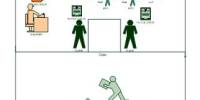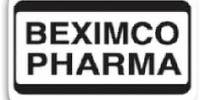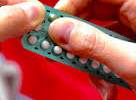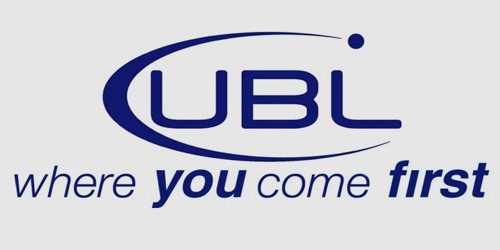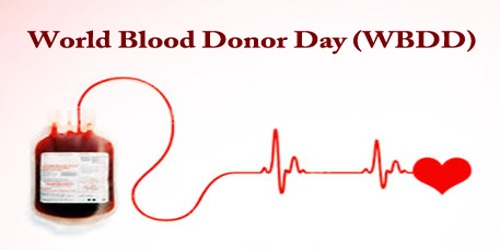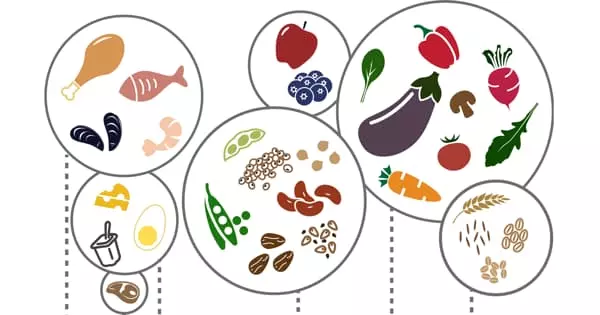Executive Summary:
Beximcon pharma is a Leading pharmaceutical company base is Dhaka, Bangladesh. It is a member of the “Beximco group” the largest private section industrial conglomerate in Bangladesh. Their strategic strengths include strong recognition of their brands. They stated their operation in 1980. manufacturing product under the licenses of Bayer Ag of Germany and Upjohn Inc of USA and now have grown to be come nation, some of the heading pharmaceutical companies. Supplying more than 10% of county’s total medicine need today “Beximco pharma” manufactures and markets its own branded gene ricers for almost all deceases from AIDS to cancer. They market their bonds though their own professional sales and marketing terms in African, South Asian, and other markets. They also supply their products to owned hospitals and institution in many countries.
Introduction:
Financial Statement Analyses is a special art of going in depth to the financial Statement by the people who have expertise to do so. Without this it helps investors and creditors to improve their economic decisions. We will examine the impact of the differential application of accounting methods and estimates on financial statements with particular emphasis on the effect of accounting choices on reported earning, stockholder equity, cash flow and various measures of corporate performance (including but not limited to financial ratios). We will also stress the use of cash flows analysis to evaluate the financial health of an enterprise.
Background of the repot:
Beximco pharma is a leading company based in Dhaka, and is acclaimed for its outstanding product quality, world class manufacturing facility product development capabilities and outstanding professional service. Without this Beximco pharma has long enjoyed the equation of being a leader in setting the trends in Bangladesh pharmaceutical industry. 25 years have passes since we started out own operation. In the last 25 years they lead the domestic pharmaceutical market in several dimensions.
In 25 years of operating in healthcare business, the true and reliability on their products has emerged as one of our core competencies. Today, the mane “Baximco pharma” has become synonymous with true and reliability. Quality is their relentless passion.
Objective:
- To know the financial condition.
- To know the financial position the pharmaceutical section.
- To guess its future condition.
Financial statement:
Analysis
Different types of Ratios and there objectives :
Short-term liquidity Ratios:
Short- term liquidity ratios are the measurement of a firm’s ability to meet its short-term obligation. Two ratios are typically used to measure short-term liquidity 1) current ratio and 2) quick ratio. Both focus on the relationship between current assets and current liabilities. The quick ratio is the moiré conservative measure of liquidity.
Current Ratio:
Current ratio is an assessment of a firm’s short-term liquidity. It is computed by dividing current assets by current liabilities.
Quick Ratio:
Quick ratio is a conservative assessment of a firm’s short-term liquidity.
It is computed by dividing quick assets (cash, receivables, and marketable securities) by current liabilities.
Debt- Management Ratios:
Debt- management ratios are the measurements of a firm’s ability to meet obligations involving debt. In general debt management’s ratio measures either (1) the excess of earnings over interest or (2) the proportion of debt in the business liabilities and equity.
Times-Interest-earned Ratio:
It is the measurements of the excess of income available for interest payment over the amount of interest payments. The equation used to calculate this ratio is: (net income+ interest+ taxes)/ interest.
Debt to Equity Ratio:
This is the measurements of the proportion of capital provided by creditors relative to that provided by stock holders. It is computed by dividing total debt by total equity.
Operating Ratios:
Operating ratio (efficiency ratio) are measures of how intensely a business uses its assets. The principal operating ratio is measure of turnover, the average length of time required for assets to be consumed or replaced.
Accounts Receivable turnover Ratio:
It is the measurement of the number of times account receivable is turned over each year. It is computed by dividing net credit sales by average account receivable.
Inventory turnover Ratio:
Inventory turnover ratio is the measurement of the number of times inventory is turned over each year. The equation used for computation is cost of good sold/ average inventory.
Assets turnover Ratio:
The ratio is used to measure the intensity with which business assets arused to produce sales revenue. It is computed by dividing net sales by the average total assets.
Profitability Ratios:
Profitability ratios are the measurement of (1) the contribution of the elements of operations of profit or (2) the relationship of profit to total investment and investment by stockholders.
Goss margin Ratios:
It is the measurement of the proportion of each sales taka that is available to pay other expenses and provide profit for owners. This ratio is computed by dividing gross margin by net sales.
Operating income Ratio:
It is the measurement of the profitability of business operations in relation to its sales. It is compared by dividing operating income by net sales.
Net income Ratio:
This ratio is the measurement of the proportion of each sales taka that is profit. The equation for computation the ratio is: net income / net sales.
Returns on assets Ratio:
Return on assets ratio is the measurement of the profit earned by a firm through the use of all its capital, or the total investment by both creditor and owners. The equation for computation of this ratio is:( net income+ interest)/ average total assets.
Returns on Equity Ratio:
This ratio is the measurement of the profit earned by a firm through the use of capital supplied by stockholders. The equation for computation is: net income/ average equity.
CURRENT RATIO:
CURRENT ASSETS
CURRENT RATIO= ………………………..
CURRENT Liabilities
2006 | 2005 | 2004 |
403164955 ………………….. 2260755481 =1.78Times | 3242502312 ……………………. 1949949426 =1.66Times | 2016056187 ……………………… 1250675506 =1.61Times |
NOTE: Here the assets of 31December, 2006 are 1.78. so, we can say that the situation of assess and liabilities of 31 December 2006 is better than assts and liabilities 31 December 2005 and 2004.in this ratio we see that the company has 1.78 in current assets to cover each 1.00 in current liabilities.
QUICK RATIOS:
CURRENT ASSETS-Inventories
QUICK Ratio= ……………………………………………
Current liabilities
4031684955-134236447 …………………………… 2260755481 =1.19Times | 3242502312-1144912356 …………………………….. 1949949426 =1.07Times | 2016056147-795856209 …………………………. 1250675506 =0.97TIMES |
NOTE: Here 31 December, 2006 quick ratio is 1.19.we can say that 31t December 2006 quick ratio is better than previous years. In this situation we can say that the company has 1.19 sales of inventory to pay the bills.
Cash flow liquidity:
Cash + market securities + CFO
Cash flow liquidity =…………………………………….
Current liabilities
| 2006 | 2005 | 2004 |
| 316,720,982+20,250,000+175217000……………………………………… 2260755481,481 = 0.80 times | 382,074,333+20,250,000+169502584………………………………………. 1949,949,426 = 0.5=65 times | 52,080,250+20,250,000+15963522…………………………………… 1250,675,506 = 0.50 times |
Note: It explaining the improvement in the cash flow liquidity ratio and stronger short-term solvency.
Leverage ratio: Debit financing and coverage:
Debt Ratio:
Total liabilities
Debt Ratio=…………………….
Total Assets
| 2006 | 2005 | 2004 |
| 8050645877……………. 9298987312 = 0.87 | 7055122440…………… 7907932662 = 0.88 | 5247891358…………… 5877361667 = 0.89 |
NOTE: The debt ratio indicates how borrowing has financed much of the firm’s assets lower the ratio means lower amounts of borrowing. In year 2006 the ratio is lower than previous years.
Debt to equity ratio:
Total liabilities
Debt to equity ratio=………………………………..
Share holders equity
| 2006 | 2005 | 2004 |
| 8050645877 |
……………………..
6402014772
= 1.30 times7055122440
…………………..
5568790156
= 1.32 times5247891358
……………………….
4590142003
= 1.15 times
NOTE: Debt to ratio is decreasing year 2006. But it is increases in 2005 not good for the company. Because the higher degree of debt the greater is the degree of risk. There have a chance bankruptcy
Times-Interest – Earned Ratio:
(Net income+ interest + taxes)
Times-Interest – Earned Ratio=…………………………………………
Interest expense
| 2006 | 2005 | 2004 |
| 1533042614+139863636 |
…………………………
139863636
=11.96 times1513018599+106451324
…………………………….
106451324
=15.21 times1151636314+108673997
……………………………
108673997
=11.60 times
Note: Times –interest – earned ratio has increase in the year 2005 but it decreases in 2006. So the company is now in a stable position.
Activity ratios: assets liquidity, assets management efficiency:
average collection period:
Accounts receivable
Average collection period= …………………………….
Average daily sales
| 2006 | 2005 | 2004 |
| 85644000 |
……………
0689905396/365
=16 days78854600
…………….
5332046635/365
=20 days67892469
…………….
4721551742/365
=22 days
Note: This ratio determines how rapidly the firm’s credit accounts are being collected. In 2006 average collection period is 16 days. Which is less than 2005 & 2004. This means that in this years management was more efficient form previous years.
Accounts receivable turnover ratio:
Net sales
Accounts receivable turnover ratio: ………………………………
Accounts receivable
| 2006 | 2005 | 2004 |
| 6075711742 |
………………….
787604783
=7.715270874301
………………..
474055792
=11.114636514957
………………
79036484
=58.66
Note: This circumstances we see that, account receivable turnover is decrease than previous years. So we can say that is quite good for the company.
Inventory turnover ratios:
Cost of good sold
Inventory turnover ratio=………………………
Inventory
| 2006 | 2005 | 2004 |
| 3525402669 |
………………
134236447
=2.633159453706
………………..
1144912356
=2.7628154959729
…………………
795856209
=3.54
Note: this ratio show that how fast the inventory is converted into finished goods that are sold. In 2006 the ratio is lower than 2005.it is good for the company.
Total Asset turnovers Ratio:
Sales
Asset turnovers Ratio=………………………….
Total Asset
| 2006 | 2005 | 2004 |
| 6075711742 |
……………….
9298987312
=0.655270874301
…………………….
7907932662
0.674636514957
………………….
5877361667
=0.79
Note: In2006 TATO ratio is very poor through out the year 2005.since the ratio is showing decreased in 2006, it reveals the fact that the firm could not use its asset efficiently to generate sales. This is because a large portion of assets is involving the current assets, which are not productive.
Profitability ratios:
Gross margin ratios:
Gross margin
Gross margin ratio=…………………..
Net sales
| 2006 | 2005 | 2004 |
| 2564502727 |
………………
6075711742
=0.422172592929
………………
5270874301
=0.411906592013
……………………
4636514957
=0.41
Note: This ratio indicates the efficiency of operation of how products are priced. In 2006 gross margin ratio is increased than previous years. It is good for the company.
Operating income ratios:
Operating income
Operating income ratios=…………………………
Net sales
| 2006 | 2005 | 2004 |
| 1580204535 |
………………
6075711742
=0.261337725672
…………………
5270874301
=0.25551832995
……………….
4636514957
=0.12
Note: Operating income ratio is increasing in per year. So we can say that the company earned enough profit to cover operating cost. It is good for the company.
Net income ratios:
Net income
Net income ratio=…………………….
Net sales
| 2006 | 2005 | 2004 |
| 1533042614 |
……………….
6075711742
=0.251513018599
………………..
5270874301
=0.291151636314
…………………
4636514957
=0.25
Note: Net income ratio is decrease on the last year. In this ratio the company earned 0.25 profits from 1 dollar sales in 31 December, 2006. It is not good for the company. They have to improve the condition.
Return on assets ratio:
Net income
Return on assets ratio=……………………..
Total Asset
| 2006 | 2005 | 2004 |
| 1533042614 |
………………
9298987312
=0.16 1513018599
……………….
7907932662
=0.191151636314
………………….
5877361667
=0.20
Note: this ratio reflects the rate of return on firm’s total investment after interest and taxes. In year 2006 the percentage of ROA is lower than previous years. This mean year 2006 the return of firm’s total investment after interest and taxes is very insignificant.
Cash return on assets:
Cash flow operating activities
Cash return on assets ratio=…………………………………
Total assets
| 2006 | 2005 | 2004 |
| 175217000 |
……………..
9298987312
=0.018169502584
…………………
7907932662
=0.021159638522
……………….
5877361667
=0.25
Note: The cash return on assets of the decreasing respectively 2004, 2005, and 2006. It is negative activity of the company. Cash generating ability of assets decreases year after year. It is not good for future investment. Because, cash will be required for the future investment
Beximco pharmaceuticals Limited:
BALANCE SHEET:
For the period ended 2006, 2005, 2004
| 2006 2005 2004 |
| Assets: |
| Non current assets: 5267302357 4665430350 3861305480 |
Property, plant and equipment 2273761161 2317358471 2237138891
Carrying value
Capital work-in-progress 1077707832 687238515 402266589
Investment-Long term (at cost) 1915833364 1660833364 1221900000
| Current assets: 4031684955 3242502312 2016056187 |
Inventory 1342364478 1144912356 795856209
Trade debtors 288732137 267527741 225115010
Advances, deposits and prepayments 166492706 146042777 107177611
Investment in marketable securities (at cost) 20250000 20250000 20250000
Short term loan 1897124652 181695105 815577152
Cash and cash equivalents 316720982 382074333 52080205
| TOTAL ASSETS 9298987312 7907932662 5877361667 |
Shareholders’ Equity and liabilities:
| Shareholder’ Equity 6402014772 5568790156 4590142003 |
Share capital 496800000 432000000 360000000
Share premium 2035465000 2035465000 2035465000
General reserve 105878200 105878200 105878200
Tax Holiday reserve 947678690 919636288 853731206
Retained earning 2816192882 2075810668 1235067597
| Non-current liabilities 636217059 389193083 36544158 |
Long term loans-secured 602349621 389193080 36544158
Deferred tax liability 33867438 ……….. ………
| Current liabilities 2260755481 1949949426 1250675506 |
Short-term bank loans 1471158187 1370262208 896145336
Long term loans- current portion 261416941 142875686 55921187
Trade creditors 79390166 83848465 52646198
Liabilities for expense 49771374 102395447 16928468
Liability for other finance 399018813 250567620 229034317
| Total share holders 9298987312 7907932662 5877361667 |
Equity and liabilities
Beximco pharmaceuticals Limited
BALANCE SHEET
Income statement
For the period ended 2006, 2005, 2004
| 2006 2005 2004 |
| Sales: 7085553149 6199134802 5482087920 |
| Less: allowance for doubtful account 995647753 867088167 760536178 |
| Net sales 6089905396 5332046635 4721551742 |
| Cost of good sold 3525402669 3159453706 2814959729 |
| Gross profit 2564502727 2172592929 1906592013 |
| Operating expenses 984298192 834867257 677379509 |
| Selling and distribution expense 798131173 675241846 536102740 |
| Administrative expenses 186167019 159625411 141276769 |
| Profit from operation 1580204535 1337725672 551832995 |
| Other income 169353845 357395181 88679623 |
| Financial expenses 139863636 106451324 108673997 |
| Net profit before WPPF 1609694744 1588669529 1209218130 |
| Allocation for WPPF 76652130 55650930 57581816 |
| NET PROFIT BEFORE TAX 1533042614 1513018599 1151636314 |
| Provision for income tax 333310560 257170446 181592771 |
| Provision for deferred income tax 33867438 |
| NET PROFIT AFTER TAX 1165864616 1255848153 970043543 |
| (Transfer to the statement of changes in equity) |
| Earnings per share(EPS) 234.67 252.79 224.55 |
Recommendation:
- To remove some positive side which can be affective for the organization?
- If the average collection period decreasing day by day. The sale of the firm may be decreases.
- The current ratio is increasing which is a positive side of the firm it means the firm is capable to face its all liabilities.
Conclusion:
The financial statement analyses of the beximco pharmaceutical ltd. The financial statement consists of the mixture of steps and prices that interrelate and affect each other. No one part of thee analysis should be interpreted in isolation. Short –term liquidity impacts profitability, profitability began with sale which relates to the liquidity of assets. The efficiency of assets management influences the cost and Availability of credit which shapes the capital structure. Every aspect of a cost Availability of a company’s financial statement condition performance and outlook affects the share price.

